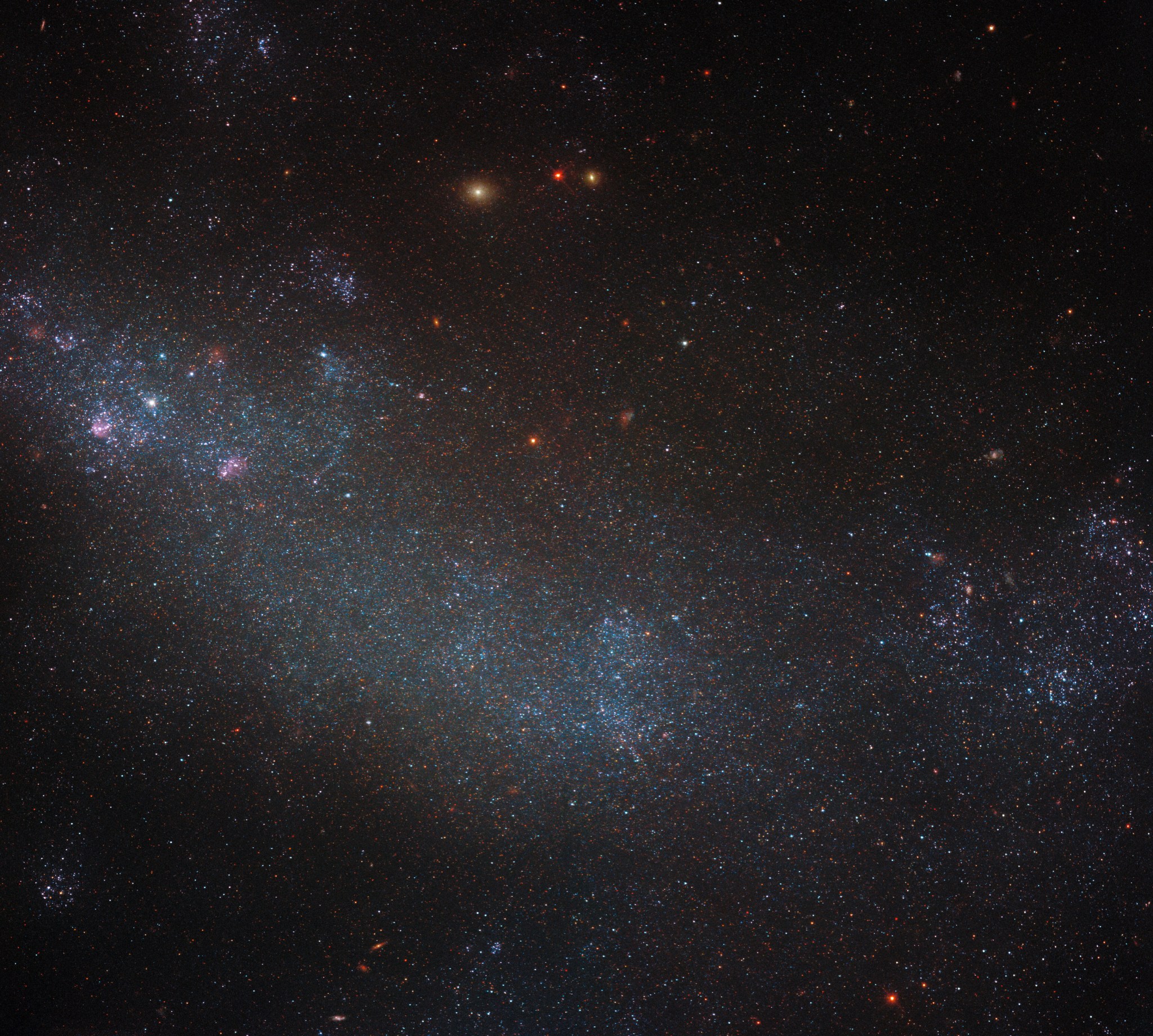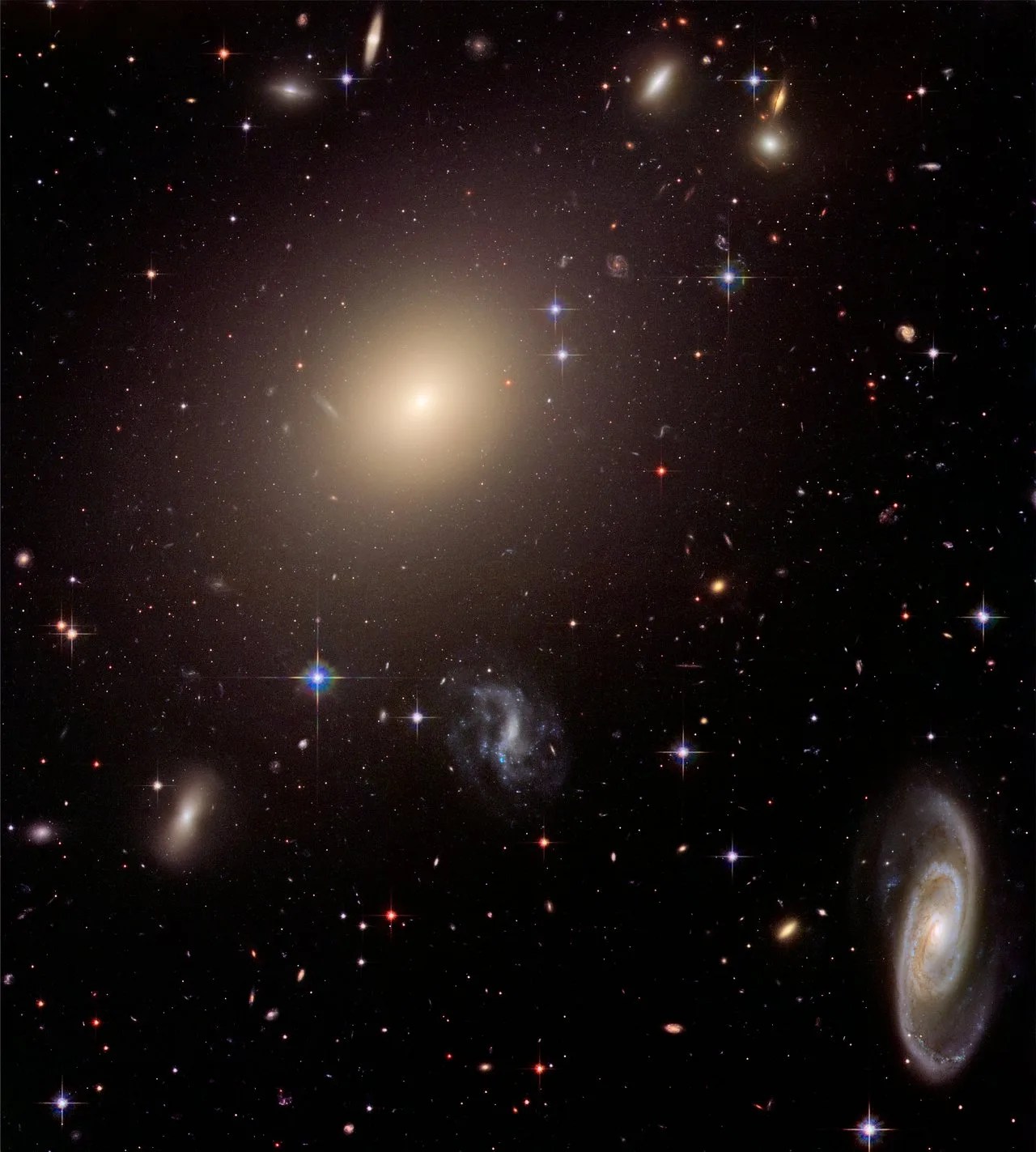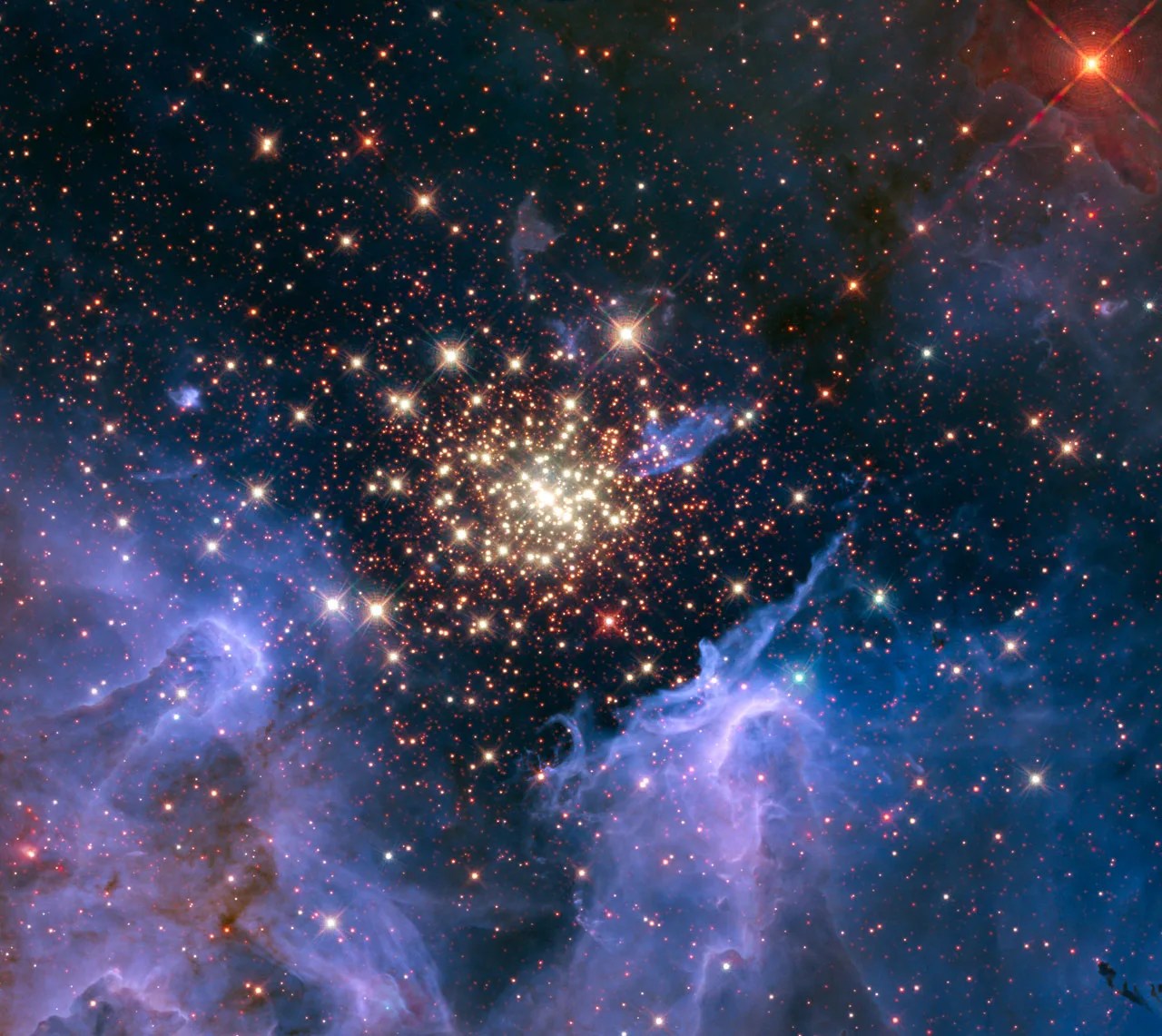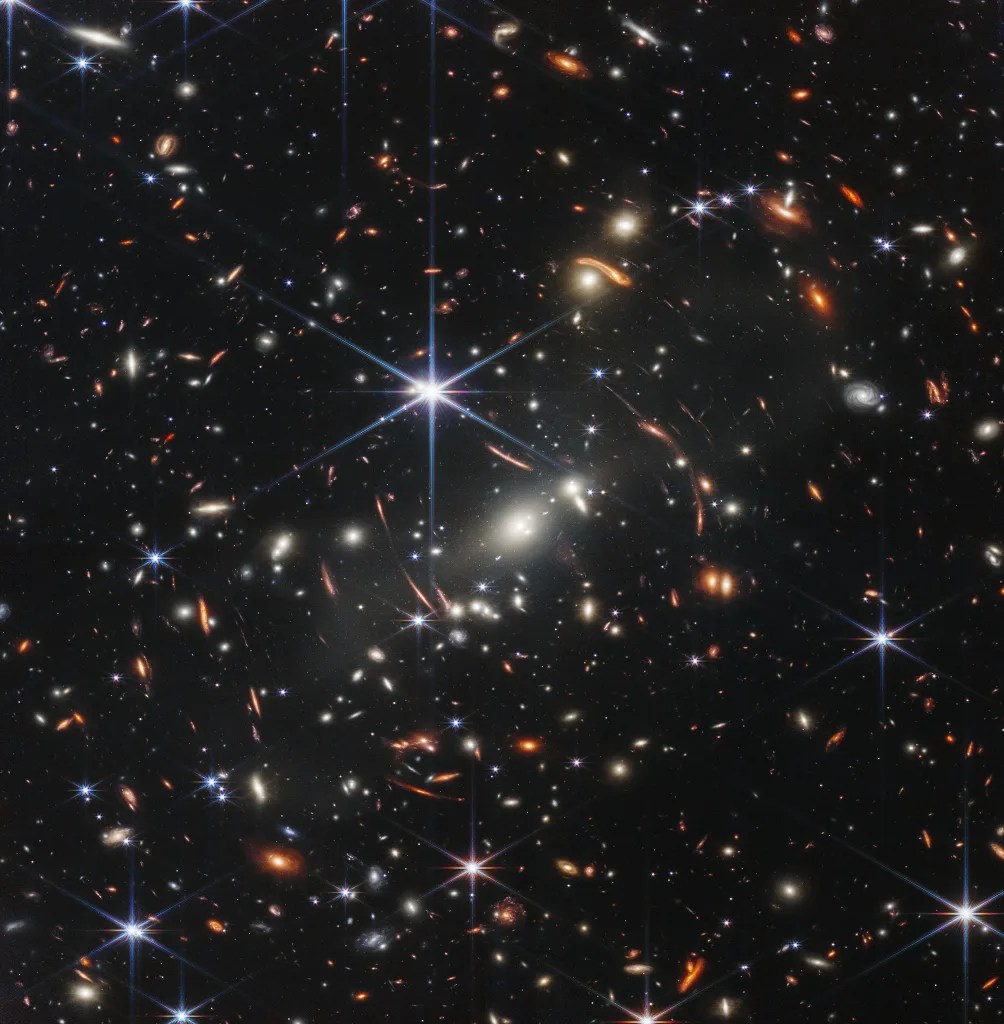This NASA/ESA Hubble Space Telescope image shows a densely packed field of stars laid upon a background of dust, gas, and light from more distant celestial objects. There are so many stars in this image’s field of view that it may be a little tricky to discern that you are in fact looking at a galaxy. Known as ESO 245-5, this galaxy may be harder to recognize because of its apparent lack of structure, which contrasts sharply with Hubble’s spectacular images of spiral galaxies that hold seemingly ordered spiral arms of stars, gas, and dust.
ESO 245-5 is an IB(s)m type of galaxy under the De Vaucouleurs galaxy classification system. This designation means that the galaxy is irregular (I) with no ordered structure. It is also barred (B) meaning it holds a dense bar of stars that crosses through its center. The third term ((s)) indicates that it has a slight spiral structure, while the last term (m) means it is a type of galaxy similar to the Large and Small Magellanic Clouds that are irregular satellite galaxies of the Milky Way. ESO 245-5 is a relatively close neighbor of the Milky Way. It is located some of 15 million light-years from Earth in the constellation Phoenix.
Text credit: European Space Agency (ESA)
Media Contact:
Claire Andreoli
NASA's Goddard Space Flight Center, Greenbelt, MD
claire.andreoli@nasa.gov































